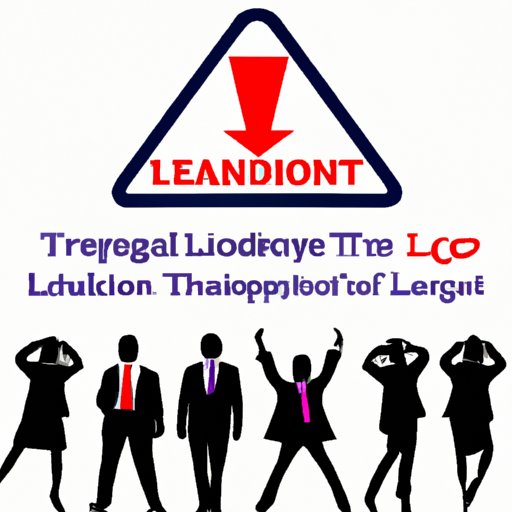Introduction
Toxic leadership is a term used to describe a leader who engages in negative behaviors and attitudes that create an unhealthy work environment for their team. It can be difficult to recognize these behaviors and even more challenging to confront them head-on. However, it is important to understand how to deal with toxic leadership in order to protect yourself and the people around you.

Identify the Signs of Toxic Leadership
The first step in dealing with toxic leadership is to identify the signs. Some common indicators of a toxic leader include an unhealthy workplace environment, negative attitudes and behaviors, and a lack of respect for employees.
An unhealthy work environment can manifest itself in many ways, including a lack of trust, excessive criticism, and a failure to recognize or reward team members for their efforts. Negative attitudes and behaviors can include bullying, manipulation, and a refusal to listen to other points of view. Finally, a lack of respect for employees can be seen in a disregard for their opinions, a refusal to acknowledge their contributions, and a tendency to take credit for their successes.

Establish Boundaries and Set Expectations
Once you have identified the signs of toxic leadership, it is important to establish boundaries and set expectations. This means clarifying your needs, communicating expectations to the leader, and being assertive in standing up for yourself and others.
Start by getting clear on what you need in order to do your job effectively. Make sure to communicate these needs to the leader and be prepared to defend them if necessary. You should also make sure to communicate your expectations for how the leader should treat you and your colleagues. Finally, it is important to be assertive when addressing any issues that arise. Speak up when you feel something is wrong and don’t be afraid to call out inappropriate behavior.
Develop Effective Communication Strategies
In order to effectively address toxic leadership, it is important to develop effective communication strategies. This means listening actively, using open-ended questions, and avoiding blaming or criticizing. Listening to what the leader has to say will help you better understand their perspective and provide a starting point for discussion. Asking open-ended questions will allow you to explore potential solutions without making the leader feel attacked. And finally, it is important to avoid blaming or criticizing as this can put the leader on the defensive and make it more difficult to reach a resolution.
Make Use of Conflict Resolution Techniques
When dealing with toxic leadership, it is important to make use of conflict resolution techniques. This means identifying the conflict, exploring options for resolution, and establishing agreement. First, it is important to identify the root cause of the conflict in order to determine the best course of action. Then, it is important to explore potential solutions and come up with a plan for resolution. Finally, it is important to establish agreement on how to move forward and ensure that everyone involved is on board.
Seek Support from Others
Finally, it is important to seek support from others when dealing with toxic leadership. Talk to trusted colleagues about the situation, reach out to mentors for advice, and utilize professional resources such as counseling or mediation services. Having a strong support system in place can make it easier to navigate difficult situations and provide encouragement when needed.
Conclusion
Dealing with toxic leadership can be challenging, but it is possible to identify the signs, establish boundaries and expectations, develop effective communication strategies, utilize conflict resolution techniques, and seek support from others. Remember that you are not alone in this and that there are resources available to help you through it.
Take the time to learn about toxic leadership and equip yourself with the skills and knowledge to respond appropriately. With a little effort and determination, you can protect yourself and those around you from a toxic leader.
(Note: Is this article not meeting your expectations? Do you have knowledge or insights to share? Unlock new opportunities and expand your reach by joining our authors team. Click Registration to join us and share your expertise with our readers.)
